Conifer Chamber (6400-05)
Printable PDF: 6400-05 Conifer Chamber installation instructions
Instructions for installing the 6400-05 Conifer Chamber onto the LI-6400/XT Portable Photosynthesis System.
Installation
The sensor head handle must be removed to accommodate the 6400-05, so a tripod is usually required for making measurements.
- Remove the male end of the leaf temperature thermocouple connector by pulling straight out, and pull the air hose from the underside of the leaf chamber.
- Unplug the log switch (not used with the conifer chamber). If the log switch wires are threaded underneath the bottom cover of the sensor head, this cover must be removed to free the log switch connector.
- Turn the sensor head over and remove the 3 Phillips head screws as shown in Figure 1‑1.
- Remove the hose barbs, if necessary. You may be able to slide the cover out from underneath the hose barbs; be careful not to damage the PC board under the cover. If you remove the hose barbs, be sure and note the position of the sample and reference air hoses; the sample hose is wrapped with a piece of black shrink wrap.
- Free the wires.
- Re-assemble the cover on the bottom of the sensor head.
- Remove the handle assembly:
- Unscrew the knurled leaf chamber adjustment nut (turn clock- wise) until it is free of the handle (Figure 1‑2).
- With the handle latching mechanism in the closed position, wrap tape or string around the handle (where your hand would normally be) so that it will stay together. Failure to do so may result in the spring coming out. Leave the handle secured in this manner.
- Remove the 2 screws (3 on some instruments) on the back side of the handle, as shown in Figure 1‑3, using a #1 Phillips head screwdriver.
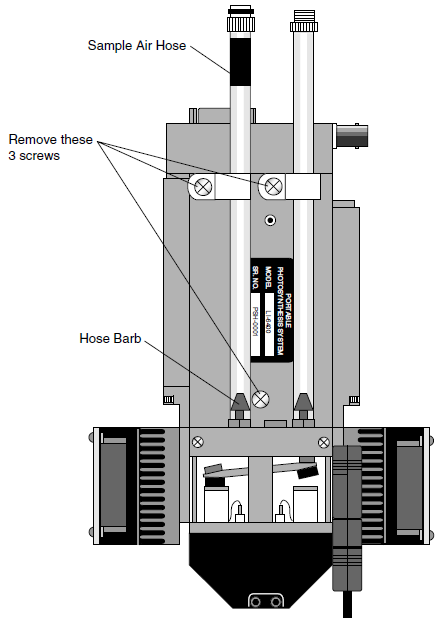
- Figure 1‑1. Remove the 3 screws on the sensor head bottom cover.
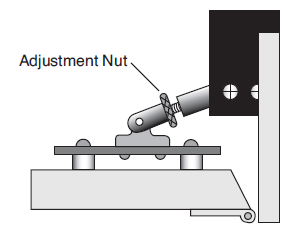
- Figure 1‑2. Unscrew the knurled adjustment nut.
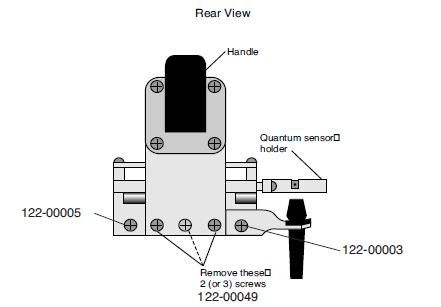
- Figure 1‑3. Remove the 2 or 3 screws on the back of the handle.
- Remove the upper half of the leaf chamber.
- Remove the 2 screws from the hinge on the rear of the upper half of the leaf chamber (Figure 1‑4).
- Unhook the connector from the PAR sensor or LED light source, if necessary.
- Remove the lower half of the leaf chamber. There are 8 hex head cap screws on the optical bench cover, as shown in Figure 1‑5. Remove the cap screws with a 5/64” hex key (in the spares kit). The lower half of the leaf chamber can now be removed. Unplug the air hose connecting the chamber and match valve. Note that the screw nearest the leaf chamber forms a metal-to-metal seal in the air path- way, and must be tight upon re-assembly of the standard leaf chamber.
- Attach the conifer chamber mounting block with the 8 hex head cap screws from the previous step. Note that there is a thin vinyl gasket on the top surface of the optical bench. This gasket is reusable; it should adhere to the optical bench, but if it becomes detached, be sure to reposition it before attaching the mounting block. Tighten the 8 screws evenly.
- Attach the lamp connector to the back of the conifer chamber mounting plate.
- Open the 6400-05 and attach to the mounting block using the 4 screws provided (Figure 1‑6).
- Connect the air hose between the hole in the front of the chamber and the match valve.
- Attach the tripod mounting bracket to the sensor head. The finished assembly should look like Figure 1‑7.
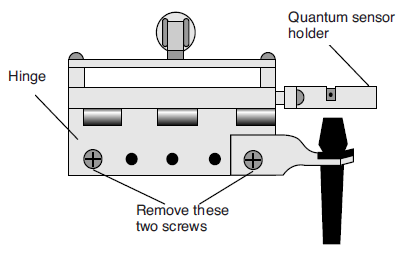
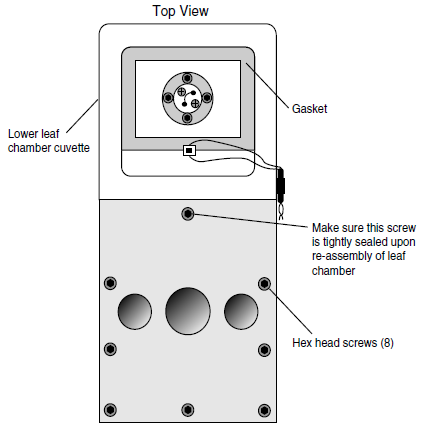
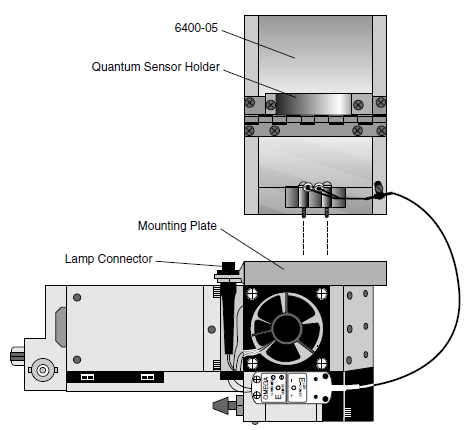
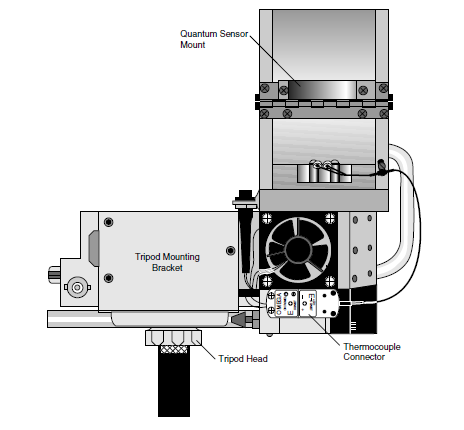
NOTE: When removing the conifer chamber and reattaching the handle, the wires to the log switch need not be threaded beneath the sensor head cover.
Reference:
J. J. Landsberg and M. M. Ludlow, 1969. A technique for determining resistance to mass transfer through the boundary layers of plants with complex structure. Journal of Applied Ecology. (7)187-192
